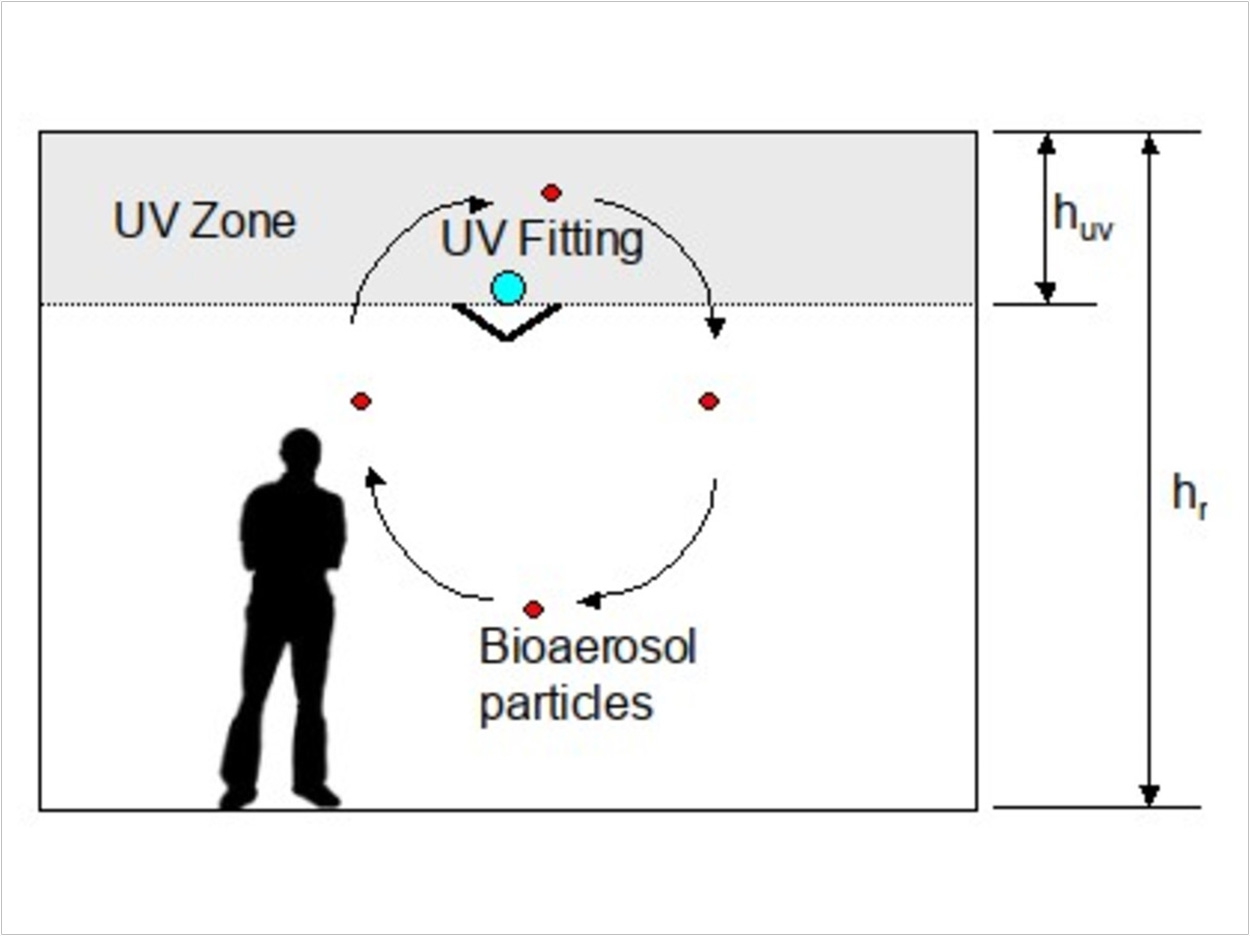
An ultraviolet (UV) light technology that’s already used to prevent the spread of other airborne diseases in buildings has the potential to be effective against COVID-19, report researchers at Queen Mary University of London and Leeds Beckett University.
The study found that upper room UV germicidal irradiation (UVGI) can kill SARS-CoV-2 virus particles, which can be transmitted by aerosolized droplets that float in the air.
UVC is known to be very effective at “killing” or inactivating microorganisms, though it’s harmful to human beings, the researchers said. Upper room UVGI uses UVC light to create an irradiation field above the heads of room occupants so it can disinfect the air while keeping people in the room safe.
The researchers tested the feasibility of upper room UVGI to reduce COVID-19 transmission by analyzing historical published data examining the effect of UV irradiation on coronaviruses.
Evaluating all the data, the researchers showed that SARS-CoV-2 virus particles found in the air are likely to be susceptible to UVC and that the levels of UVC light required to inactivate the virus would be practical and safe for upper room applications.
The transmission of SARS-CoV-2 virus particles through tiny respiratory droplets is one of the main ways that COVID-19 spreads between people, the researchers said. The risk of airborne transmission is especially high in poorly ventilated buildings, they added, and there is an urgent need for technologies to reduce the spread of COVID-19 within these spaces.
“Now we know that COVID-19 infection can occur from airborne exposure to the virus, finding ways to minimize the risk of transmission, particularly in buildings, is becoming increasingly important,” said Clive Beggs, emeritus professor of applied physiology at Leeds Beckett University.
“Whilst we know wearing masks and opening windows are effective ways to minimize the spread of COVID-19 indoors, these measures aren’t always practical, especially in winter,” Beggs said.
Upper room UVGI is already a well-established technology and has proven effective to prevent the spread of other diseases such as measles and tuberculosis within buildings. This study shows that we have good reason to believe this technology could also protect indoor spaces such as offices, or restaurants and bars, and help to allow us to start to return to normal life in a safe way,” Beggs said.
“Now it becomes an engineering problem of how we can use this technique to prevent the spread in buildings,” said Dr. Eldad Avital, reader in computational and experimental fluids and acoustics at Queen Mary.
“This is where computational fluid dynamics becomes important as it can start to address questions around how many UVGI lights are needed and where they should be used,” Avital said.
“One thing we know is particularly important for these systems is air movement, so for them to work effectively in poorly ventilated spaces, you might need to use ceiling fans or other devices to ensure that larger aerosol particles are adequately irradiated,” Avital said.
The researchers are now exploring how UV air disinfection technologies could be put into practice. For example, one project they are working on will investigate the use of a low-cost air purifier system to disinfect air based on the UVC technology.
“The idea is that air could be taken out of the room using an air purifier and disinfected with UVC light, before the clean air is then put back into the room,” said Avital.
“Another interesting area we’re looking into is using ionizers to disinfect the air. These systems release negative ions into the air, which latch onto positive ions, such as viruses, making them heavier. This causes them to fall to the ground or onto surfaces, where they can then be removed using normal cleaning approaches,” Avital said.
The study, “Upper-Room Ultraviolet Air Disinfection Might Help to Reduce COVID-19 Transmission in Buildings: A Feasibility Study,” was published by PeerJ.
Related Articles
UV-C Light Effectively Kills COVID-19 Virus on N95s
Partnership Introduces UV Infection Control to DSO’s Practices
Portable Disinfection Chamber Uses UV Light to Sterilize PPE


